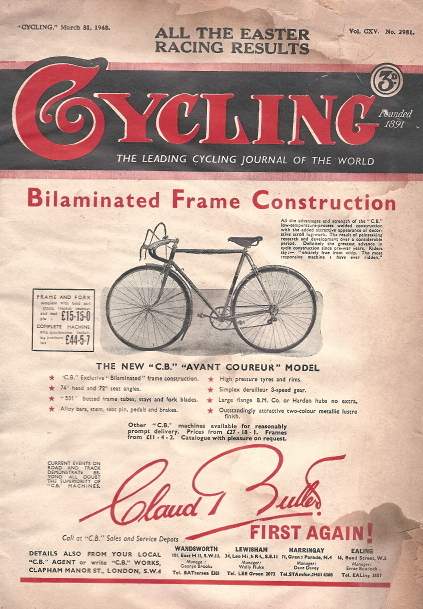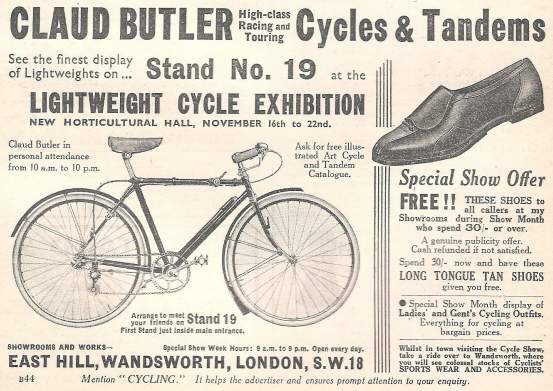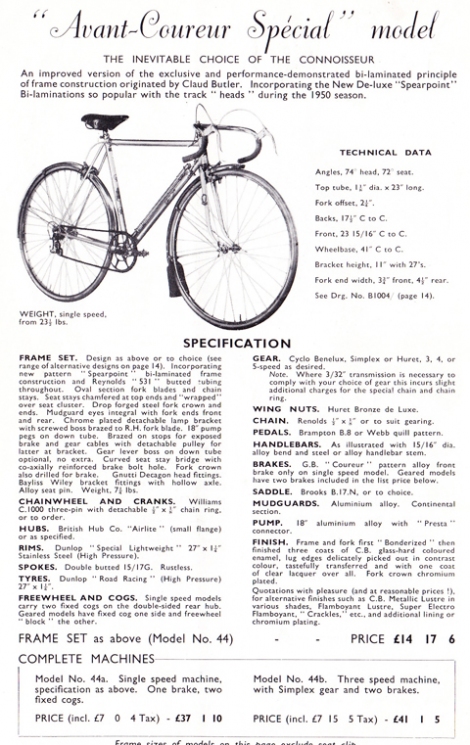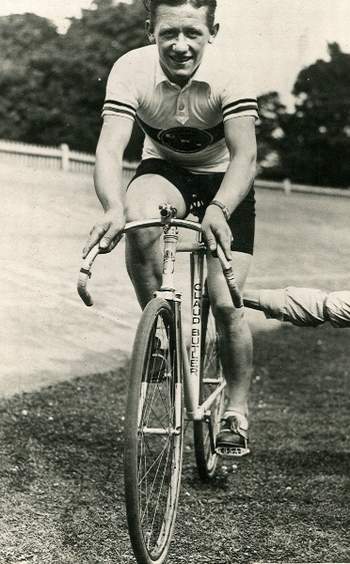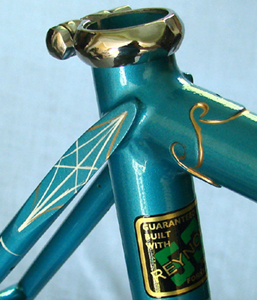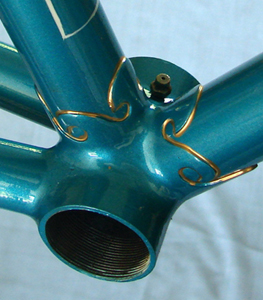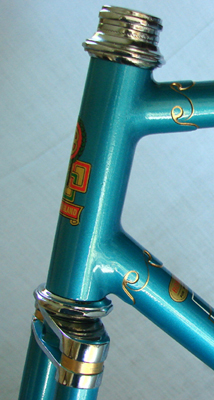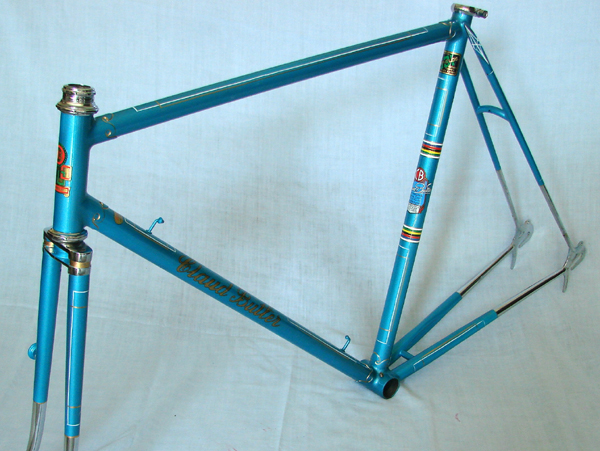Butler, Claud
Posted: Monday 08th June 2020
Claud Butler is perhaps the only high-quality British lightweight marque that was ever widely recognised outside of the club cycling world. It is a name that has been familiar to every British cycling enthusiast from the early thirties to the present day. So why is this marque so special and what made it stand head-and-shoulders above a myriad of highly competitive rivals?
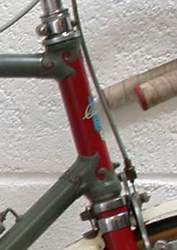
Claud Butler was a successful club cyclist, and from humble beginnings in late twenties south London he developed his marque into the premier brand amongst hand-made enthusiasts’ cycles. The quality of workmanship was of a high standard, and the latest popular fads and influences were incorporated at the earliest opportunity to keep an increasing and widening range of clubman’s cycles fresh and vibrant. Claud Butler was not a true technical innovator, but like other successful entrepreneurs he was able to identify new trends at an early stage, and then fully capitalise on borrowed ideas promoted in an original way.
The glory days of Claud Butler, as with many other lightweight marques, were the mid-to-late thirties and the immediate post-war period. This was a time when club cycling boomed in Britain and every town across the land had at least one active cycling club offering a full range of sporting, leisure and social activities. Claud Butler was a pioneer in the fashion of ‘fancy’ lugs, with ornate feature-cut lugs being incorporated into the 1937 range with the Anglo-Continental model; rival marque Hobbs having established this trend during the previous season with their Continental Superbe model. The mid thirties also saw a rapid expansion of the business and obvious commercial success for Claud Butler.
Claud Butler conceived fashionable models incorporating all of the latest ‘continental’ features and finishes, as well as an ultra-short wheelbase tandem that was to set the standard for sporting tandems for many years to come. Claud Butler had also introduced a range of ‘C.B.’ branded components and fittings, and used his own version of the Reynolds 531 transfer, incorporating the particular frame’s model name.
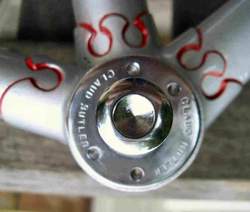
Claud Butler was a founder member of the LMA (Lightweight Manufacturers’ Association), which later became the LCMA (Lightweight Cycle Manufacturers’ Association). However, his association with this body was curtailed.
In the late thirties Claud Butler began to experiment with bronze-welded construction without the use of the usual proprietary lug castings. This was a technique used by continental frame builders that had been taken up by one or two English marques. It was a construction method that would become a feature of the Claud Butler range. Lugless ‘welded’ frames were often regarded as an inferior alternative to lugged ‘brazed’ frames, as the lugless frames demanded less labour.
By 1948 the ‘Avant Coureur’, a model using ‘Bilaminated’ construction had been introduced. This consisted of decorative sleeves pressed from flat-sheet steel being applied in place of lugs, and necessitated a mixture of bronze-welding and capillary-brazing techniques to produce distinctive and ornate ‘faux-lug’ designs. Not only was this construction method aesthetically pleasing, it was also superior in strength to the established methods of joining lightweight steel tubing. It also saved labour and avoided the necessity for lug castings which were sometimes difficult to obtain during a time when British industry was forced to concentrate on export trade.
By the late thirties Claud Butler had established five retail branches across London, as well as a ‘Midlands Depot’ in Nottingham and the ‘works’ at Clapham Manor Street. The number of shops was consolidated to four at the resumption of full trading after the end of hostilities in 1945. Great success continued through the late forties and into the early fifties, with Claud Butler celebrating his Jubilee ‘in the game’ in 1953. By the mid-fifties the glory days were over, with club cycling beginning to lose favour as a popular activity across Britain. Several manufacturers’ records show a sudden dip in production from the early fifties onwards.
The phasing-out of war-time rationing, as well as increased affluence throughout the population, brought aspirations towards consumerism and motorized transport. This was at odds with the simple pleasures of club cycling. The ultimate distraction – television – also became more affordable at this time, with many thousands of households equipping themselves to watch the live broadcast of the Queen’s Coronation in 1953. In the mid-to-late fifties Britain’s lightweight trade was in serious decline, with several prominent marques relocating and downsizing, becoming amalgamated or simply packing up for good. Claud’s finances were in a poor state and a large sum owing to the taxman put the final nail in the coffin. Claud Butler’s business was declared bankrupt. The Clapham Manor Street works closed in 1956, and so ended the Claud Butler empire and production of real Claud Butler cycles.
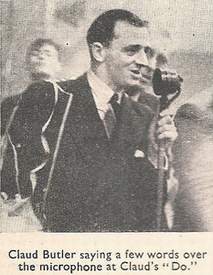
Claud Butler was a showman-entrepreneur who had grasped every available opportunity to promote and develop a successful business. For instance, how many other quality lightweight manufacturers promoted an annual ‘do’ with a dance band and cabaret acts, or produced a pin badge, or were active sponsors of well known international riders, or placed regular display advertising in Cycling, or used their proprietor’s personality in the form of a cartoon caricature, or marked their jubilee with special models, or claimed to be both “The King of Lightweights” and “Just one of the boys”? Nobody else in the trade was able to equal the zest or flamboyance of Claud Butler.
Each aspect of Claud Butler’s business was closely overseen by the proprietor in person. Frames were produced to a high standard, with originality and a distinct flair as well as offering good value for money. Claud Butler was certainly the premier – and most prolific – marque amongst British lightweight cycles in the heyday of British club cycling in the middle of the last century. The sad fate that has befallen the Claud Butler name, ever since 1957, has put an undeserved tarnish on what really should be celebrated as a shining example of quality, flair, self- promotion and business acumen.
Claud Butler established an important and endearing legacy. Some of Britain’s most celebrated ‘artisan’ frame builders either began their careers or spent time sweating over a gas torch and firebricks at Claud’s Clapham Manor Street workshop just either side of the war. That roll of honour includes such exalted names as Purves, Ephgrave, Morris, Skeates and Hurlow.
The Claud Butler marque continues to this day, but ever since the sale of the Claud Butler name in 1957, the marque has simply been a valuable label for the shameless re-branding of generic and characterless products by a succession of exploitative trade-mark owners. Had the marque been allowed to end with the bankruptcy, then Claud Butler would surely be celebrated today as an equal to the most sought after names within our interest. After a couple of failed attempts to return to business in the lightweight cycle trade, a chronic illness finally claimed Claud Butler’s life in 1978. (See additions by Mick Butler below which has extracts from Cycling and Mopeds showing that Claud Butler re-opened a new business in 1959 after selling the original business to Holdsworth 1958/9)
The author currently owns three original Claud Butler cycles, including the grey and red 1937 Anglo-Continental shown in Readers’ Bikes.
Sources:
The majority of information for the above article by David Palk has been gleaned during many a lost hour in the company of a very large pile of musty and ragged old copies of Cycling, dating from 1931 to 1958. Claud Butler catalogues are also a popular distraction. David Palk received permission from Cycling Weekly to use the reproductions on this page.
Martin Vincent has comnpiled a detailed study of Claud Butler’s Bi-laminated frames, surely one of the minefields of classic history.
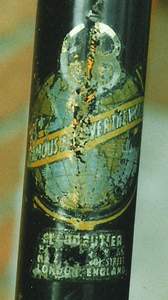
Derek Athey: drew attention to the following ‘snippet’ from Cycling:
3 September 1947 – World’s Champion Reg Harris is to be a director of a new £100,000 cycle company to be formed by the lightweight cycle manufacturer Claud Butler. The new company to be called Claud Butler Ltd. will eventually take over C B’s works at Clapham, London. Co-directors with Harris will be Claud Butler and his works manager Stuart Purves.
Claud Butler, from about 1952 onwards fitted these seat transfer, sometimes used as a
head transfer,more commonly used on the seat because of the normal practice of using a head-badge. They read “Famous All Over The World”.
These are now long-forgotten and some say only fitted to export orders but after speaking to many former Claud owners and employees at Manor
Street Works at Clapham these were fitted quite commonly on home market machines.
This is worth recording for posterity as most owners assume that there was only one type of seat transfer.
Claud Butler was purchased by the Holdsworth Co Ltd Lullington Rd, Anerly, London SE20 in 1958. They started remaking Clauds in January 1959.
(Cycling & Mopeds January 21st 1959). “The most famous name in the British lightweight industry is back on the roads of Britain. For the last few weeks I have been riding a Claud Butler, the 1959 version, the five-speed Challenge All-Rounder model. I can say, with emphasis, that it does justice to a great name.” It goes on later to quote from the C B catalogue (1959), “Claud Butler cycles have been famous through the last three decades – won esteem and pride of ownership – based on outstanding success at international events. no other cycle has had such a record over so many years – successful at every type of road and track competition – the 1959 range, while appealing to all pockets has been planned to ensure that this succession of wins will continue………. all frames and forks are built in our own workshops and guaranteed against defective workmanship and materials.” ”
As many readers will know, there has been a brief lapse, after financial difficulties, in the production of cycles bearing this name. New interests have acquired the trade mark and manufacture has resumed.” The article then goes on to describe the models to be produced.

Other models in the range include Olympic Road Path frame only, European road complete machine, Cordon Bleu road racing frame only, Coureur road machine only and Challenge All-rounder road frame or complete machine.
Claud Butler himself restarted business in May 1959 at 34 St.Johns Hill, Clapham Junction, London S.W.11. The shops official opening was on Friday May 8th and Saturday May 9th. Cycling & Mopeds May 6th.1959. “Claud Butler the man who made the Claud Butler the most famous in lightweight cycling, Claud himself opens a retail cycle business at 34 St.Johns Hill Clapham at the end of the week.
I visited the shop shortly after its opening he was an official retailer for Raleigh and there were quite a few new Clauds in the shop at this time.
Also see the Hamilton-Butler venture.
Mick also submitted details of the 1951 Claud Butler, new, ‘Avant-Coureur Spécial’ with spearpoint Bi-laminations which had previously been used on track frames – see image below:
The Claud Butler Sport Anglais (above)
Four images of 1950s Claud Butler Sport Anglais clearly showing the outlines of the bi-laminated lugs used for this model. It can be seen that the head and seat lugs only exist on the top and down tubes. The bottom bracket, on seat and down tubes but not the chainstays.
Posted: Monday 08th June 2020
Chapters
This article appears in the following categories.
Upcoming Events
Whether you are looking for a gentle social meet up, or a 100-mile ride browse the community’s upcoming events and plan your next weekend outing.

